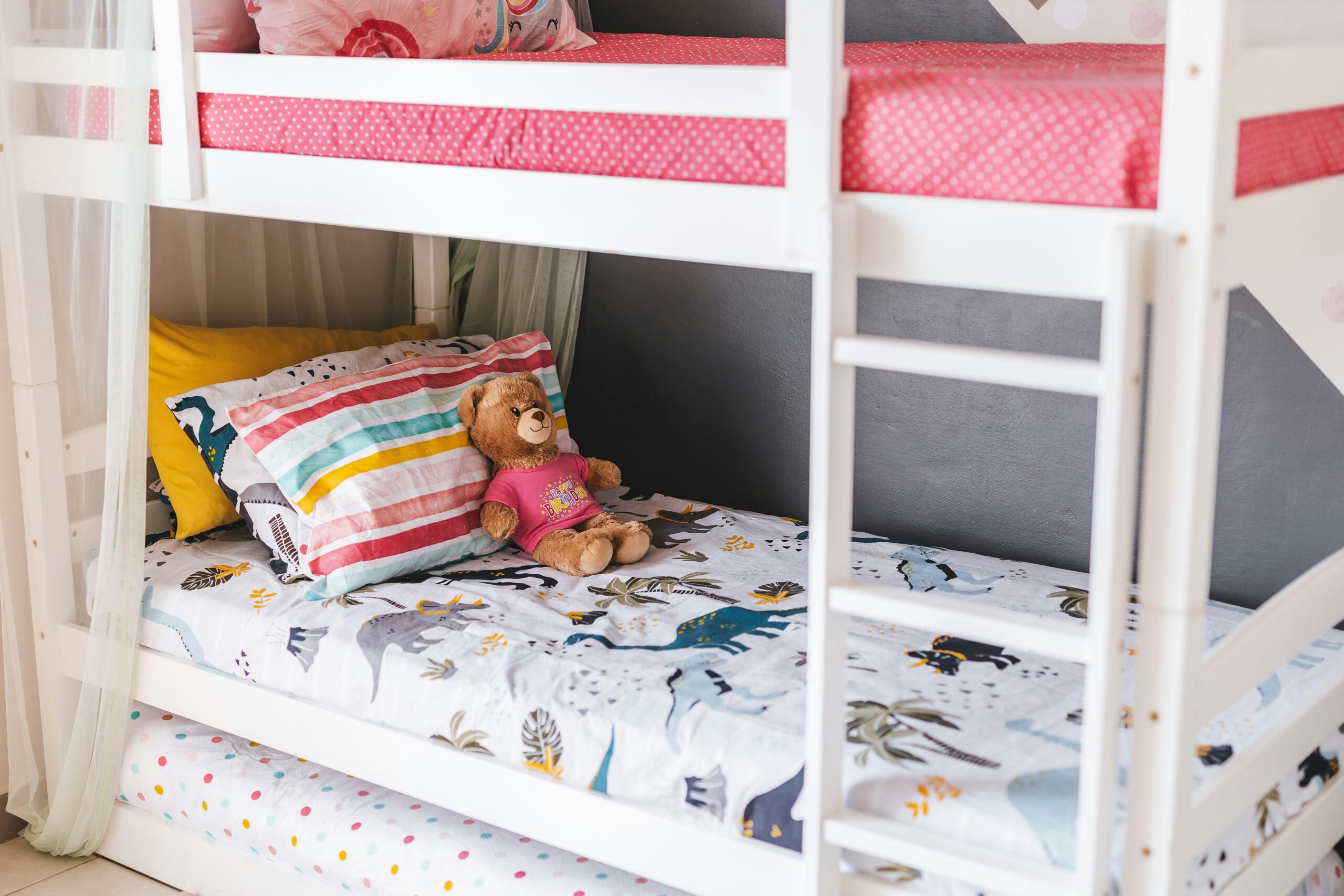Sharing a bedroom can be a fun experience for many siblings, but it also comes with a set of challenges. It can foster a sense of closeness, but it can also lead to tension if it isn’t carefully managed. A well-designed shared bedroom creates the balance between personal space, practicality, and fun, helping everyone feel comfortable and happy. Whether your children are close in age or have very different interests, crafting a space that caters to all their needs is essential.
Dividing the space fairly and functionally
By creating distinct areas within a shared bedroom, you are ensuring that each child feels they have space. Instead of building walls, consider zoning the room into sleeping, study, and play areas. You can use furniture as dividers, for example bookshelves work well to separate sleeping from play zones, offering both privacy and additional storage. For a softer boundary, hang curtains, or install half-height screens to create a visual separation without closing off the space completely. These zones or areas allow each child to enjoy their own area for relaxation, studying, or play.
Choosing smart bed solutions
Selecting the right bed can truly transform a shared bedroom. Bunk beds for kids are a classic choice, saving space whilst adding a sense of fun and adventure. High sleepers, where the bed is raised to create extra floor space beneath, are another great option, especially for older children who need a study or play area below. If you’re looking for something a bit more unique, L-shaped bunks offer a clever way to maximise space. Built-in beds can beautifully optimise the room, but they can be more costly. Alternatively, freestanding bunks offer flexibility, allowing you to change the room’s layout as needed.
Storage solutions that scale
Storage plays a crucial role in shared bedrooms, helping to keep the space organised while supporting both children’s needs. Utilising as much space as possible can avoid the room feeling overwhelming and keep things organised. Under-bed drawers are a fantastic solution, offering hidden storage that doesn’t take up additional space. These can be used to store toys, clothes, or bedding, helping to keep the room tidy and clutter-free. Built-in shelves are another great option, providing accessible storage for books, toys, and personal items. If you need extra seating or workspace, multi-use furniture like storage benches or tables with drawers can help maximise the room’s functionality.
Personalising zones to avoid conflict
Personalising each child’s space within a shared room helps them feel a sense of ownership and maintains harmony. Allow each child to choose their own bedding, colour accents, art, or pinboards, but keep a neutral common palette for the walls and major furniture to ensure the room feels cohesive. Soft, neutral tones like whites or pastels work well as a backdrop, letting each child’s personal style shine. By dividing the room equally and respecting individual preferences, both children can enjoy their own space whilst coexisting peacefully, reducing conflict and creating a balanced, calm environment.
Ensuring safety and comfort for all ages
Safety is essential in a shared bedroom, especially when it comes to sleeping arrangements like bunk beds. It’s important to pay attention to the ladder position, ensure it’s easy to climb and that there are secure rungs and no sharp edges. Guard rails on the upper bunk should be high enough to prevent falls, and if one of your children is nervous about height, add reassurance with a lower bunk. The NSPCC also suggests that children in this age group may need more privacy and space for their development. However, when sharing is necessary, it is crucial to make sure both children are comfortable with the arrangement.


Sharing can be fun if both side enjoy it. I think little touches to personalise your space can help.
My girls would of loved something like this when they were sharing a room , brilliant ideas